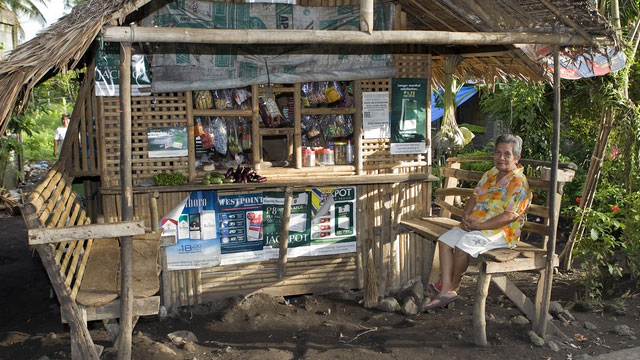SUMMARY
This is AI generated summarization, which may have errors. For context, always refer to the full article.

MANILA, Philippines – Consumer spending in rural areas is growing faster than in urban areas, a study showed.
Annual spending on fast-moving consumer goods (FMCG) by a household in arural area increased by 4% to P25,422 in 2013 from P20,610 in 2009, according to the Brand Footprint study of research firm Kantar Worldpanel.
This pace is faster than the 2% growth in the urban homes spending, stressed Kantar’s commercial director Luz Barra in a press briefing on September 4. An urban household bought P31,179-worth of FMCG products in 2013 from P28,207 in 2009.
“The efforts of different brands and retailers to branch outside the Metro have paid off. The rural sector is proving to be a very significant factor in the growth of FMCG purchases today and in the coming years, as shown by the data from our research,” noted Barra.
Rural market had an in-home purchase of P246 billion worth of FMCGs during the same period, she added.
The rural sector includes 9.59 million homes, which represent 49% of all the households nationwide.
Urban and rural spending on FMCG
FMCG categories include food, beverage, personal care and household care.
Rural households in South Luzon spent 5% more, while those in Mindanao saw an increase in purchase by 6%.
South Luzon and Mindanao are the two areas that showed the most impressive growth in terms of annual spend per household over the past 5 years.
Kantar Worldpanel defined the rural sector as areas with (1) parallel street patterns, (2) maximum of 6 private establishments and (3) maximum of 3 service institutions.
READ: Top 10 brands Filipinos buy
According to Kantar, these are the main brands they bought,
Urban households
- Nescafe
- Lucky Me
- Milo
- Bear Brand
- Surf
Rural households
- Nescafe
- Lucky Me
- Ajinomoto
- Surf
- Milo
Malls or sari-sari stores?
More and more rural area dwellers are going to the malls and sari-sari stores for FMCG purchases compared to their urban counterparts, Kantar data showed.
Rural area dwellers’ spending in modern trading channels — such as hypermarkets, supermarkets, drug stores, department stores, personal care stores, convenience stores and online shops — increased by 9%. Their urban counterparts’ spending increased only by 3%.
Those in rural areas have also overtaken those in urban areas in terms of spending in both modern and traditional trade channels, which include sari-sari stores, market stalls and grocery stores.
Because of the increase in their annual spending per household, rural households have contributed significantly to the big 4 trends which Kantar Media identified as beauty, hygiene, health and convenience.
READ: 4 factors explain Filipino buying behavior
What this means to business
Barra explained that businesses should not miss on the rural market and should “pay attention to them.”
She shared that companies’ market researchers should be aware of how the rural sector behaves and be able to take note of their preferences.
The study covered 3,000 sample households and a pen-and-paper methodology. It had a 5-year duration which commenced on June 2009 and ended on June 2013. – Rappler.com
Store image via Shutterstock
Add a comment
How does this make you feel?
There are no comments yet. Add your comment to start the conversation.